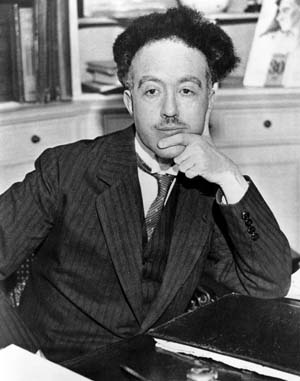Louis de Broglie

Louis de Broglie was a French physicist who made invaluable contributions to the field of quantum mechanics through his research on the wave theory of matter. Compiled by William Mitchell (wmitchell30)
Personal Life
Prince Louis-Victor-Pierre-Raymont, 7th duc de Broglie, generally known as Louis de Broglie, was born in Dieppe (Seine-Maritime), France on August 15, 1892. His parents were named Pauline de La Forest d'Armaillé and Victor de Broglie. The de Broglie family was a rather prominent one in France, Louis being 7th in the de Broglie line of dukes. Louis was known in his childhood as a charming boy, his sister writing of him, “This little brother had become a charming child, slender, svelte, with small laughing face, eyes full of mischief, curled like a poodle. Admitted to the great table, he wore in the evenings a costume of blue velvet, with breeches, black stockings and shoes with buckles, which made him look like a little prince in a fairy tale. His gaiety filled the house. He talked all the time even at the dinner table where the most severe injunctions of silence could not make him hold his tongue, so irresistible were his remarks. Raised in relative loneliness he had read much and lived in the unreal….he had a prodigious memory and knew by heart entire scenes from the classical theatre that he recited with inexhaustible verve….he seemed to have a particular taste for history, in particular political history….hearing our parents discuss politics he improvised speeches inspired by the accounts in the newspapers and could recite unerringly complete lists of ministers of the Third Republic, which changed so often…a great future as a statesman was predicted for Louis.”
After first receiving a degree in history in 1910, he then received a degree in science before being conscripted into the French Army's wireless section, where he was stationed at the Eiffel Tower for the remainder of the War. After the war he resumed his studies of theoretical physics, in particular, quantum mechanics. In 1924 he delivered his doctoral thesis, "Recherches sur la Théorie des Quanta" (Researches on the Quantum Theory). This work was extremely influential, and was used as much of the basis for the general theory of wave mechanics. He received the Nobel Prize for Physics "for his discovery of the wave nature of electrons". He was elected a member of the French Academy of Sciences in 1933, and has been the perpetual secretary since 1942. He also holds the Grand Cross of the Légion d'Honneur, the highest decoration in France.
Louis de Broglie died on March 19, 1987 of natural causes.
Scientific Contributions
Matter and Wave-particle duality: The de Broglie Equation
To quote de Broglie, "The fundamental idea of [my 1924 thesis] was the following: The fact that, following Einstein's introduction of photons in light waves, one knew that light contains particles which are concentrations of energy incorporated into the wave, suggests that all particles, like the electron, must be transported by a wave into which it is incorporated... My essential idea was to extend to all particles the coexistence of waves and particles discovered by Einstein in 1905 in the case of light and photons." "With every particle of matter with mass m and velocity v a real wave must be 'associated'", related to the momentum by the equation:
- [math]\displaystyle{ \lambda = \frac{h}{p} = \frac {h}{{m}{v}} \sqrt{1 - \frac{v^2}{c^2}} }[/math]
where [math]\displaystyle{ \lambda }[/math] is the wavelength, [math]\displaystyle{ h }[/math] is the Planck constant, [math]\displaystyle{ p }[/math] is the momentum, [math]\displaystyle{ m }[/math] is the rest mass, [math]\displaystyle{ v }[/math] is the velocity and [math]\displaystyle{ c }[/math] is the speed of light in a vacuum."
For more information, see Wave-Particle_Duality
Non-nullity and variability of mass
de Broglie theorized that photons and neutrinos have none zero masses, which is supported by Einstein's Theory of Relativity.
See also
Further reading
Cline, Barbara Lovett, Men Who Made a New Physics, University of Chicago Press, 1987
Guillemin, Victor, The Story of Quantum Mechanics, Scribner, 1968
External links
https://en.wikipedia.org/wiki/Louis_de_Broglie
http://biography.yourdictionary.com/louis-de-broglie
References
http://www.vigyanprasar.gov.in/scientists/ldbroglie.htm
http://www.nobelprize.org/nobel_prizes/physics/laureates/1929/broglie-bio.html